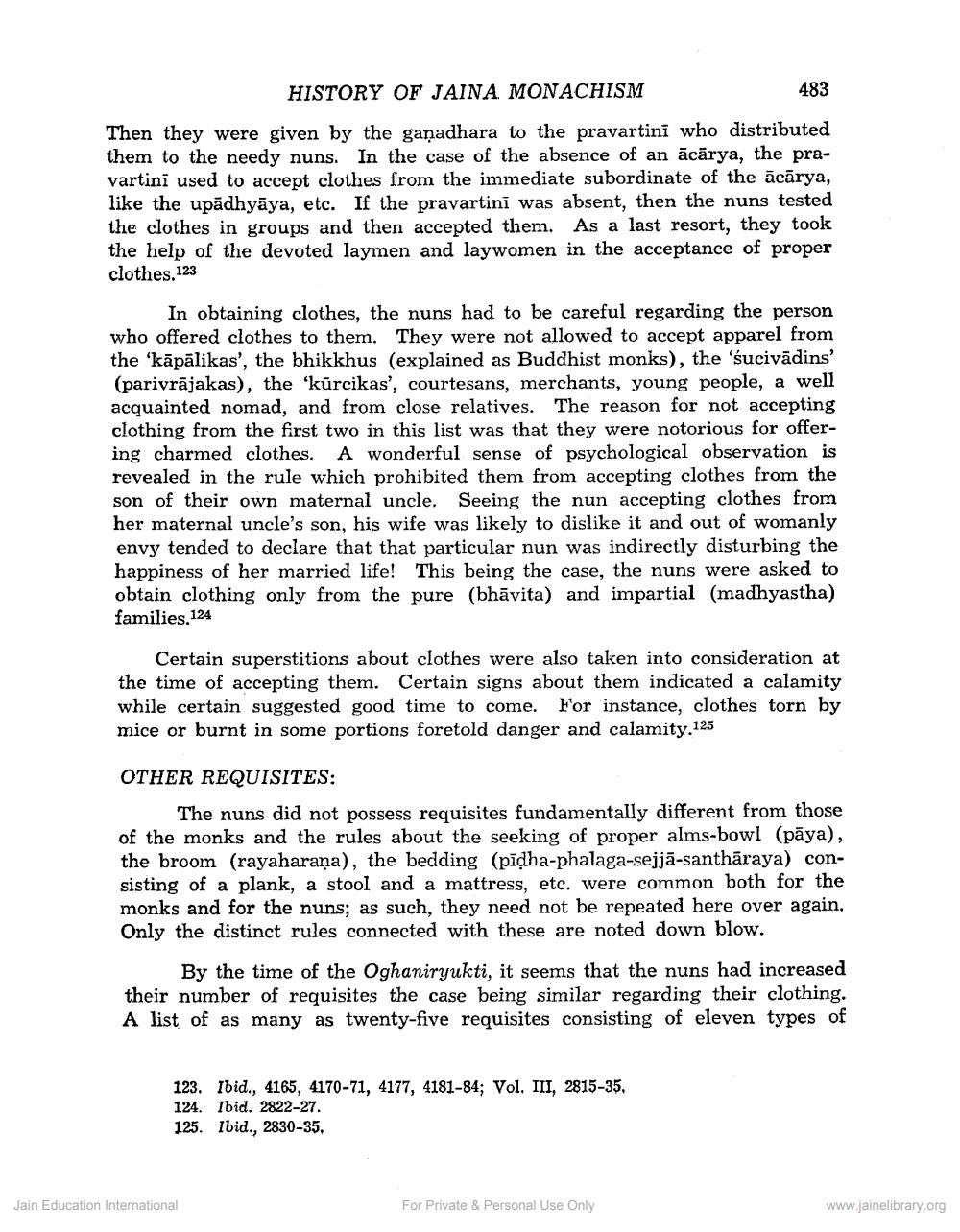________________
HISTORY OF JAINA MONACHISM
483 Then they were given by the gañadhara to the pravartini who distributed them to the needy nuns. In the case of the absence of an ācārya, the pravartini used to accept clothes from the immediate subordinate of the ācārya, like the upādhyāya, etc. If the pravartini was absent, then the nuns tested the clothes in groups and then accepted them. As a last resort, they took the help of the devoted laymen and laywomen in the acceptance of proper clothes.123
In obtaining clothes, the nuns had to be careful regarding the person who offered clothes to them. They were not allowed to accept apparel from the 'kāpālikas', the bhikkhus (explained as Buddhist monks), the 'sucivādins' (parivrājakas), the ‘kūrcikas', courtesans, merchants, young people, a well acquainted nomad, and from close relatives. The reason for not accepting clothing from the first two in this list was that they were notorious for offering charmed clothes. A wonderful sense of psychological observation is revealed in the rule which prohibited them from accepting clothes from the son of their own maternal uncle. Seeing the nun accepting clothes from her maternal uncle's son, his wife was likely to dislike it and out of womanly envy tended to declare that that particular nun was indirectly disturbing the happiness of her married life! This being the case, the nuns were asked to obtain clothing only from the pure (bhāvita) and impartial (madhyastha) families.124
Certain superstitions about clothes were also taken into consideration at the time of accepting them. Certain signs about them indicated a calamity while certain suggested good time to come. For instance, clothes torn by mice or burnt in some portions foretold danger and calamity.125
OTHER REQUISITES:
The nuns did not possess requisites fundamentally different from those of the monks and the rules about the seeking of proper alms-bowl (pāya), the broom (rayaharana), the bedding (pīdha-phalaga-sejjā-santhāraya) consisting of a plank, a stool and a mattress, etc. were common both for the monks and for the nuns; as such, they need not be repeated here over again, Only the distinct rules connected with these are noted down blow.
R42
By the time of the Oghaniryukti, it seems that the nuns had increased their number of requisites the case being similar regarding their clothing. A list of as many as twenty-five requisites consisting of eleven types of
123. Ibid., 4165, 4170-71, 4177, 4181-84; Vol. III, 2815-35, 124. Ibid. 2822-27. 125. Ibid., 2830-35.
Jain Education International
For Private & Personal Use Only
www.jainelibrary.org




